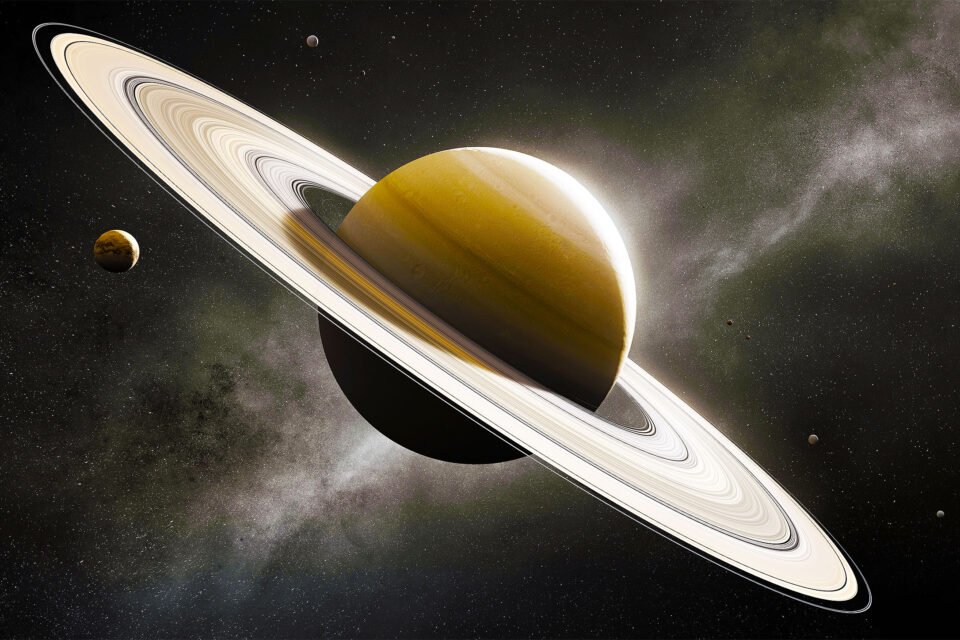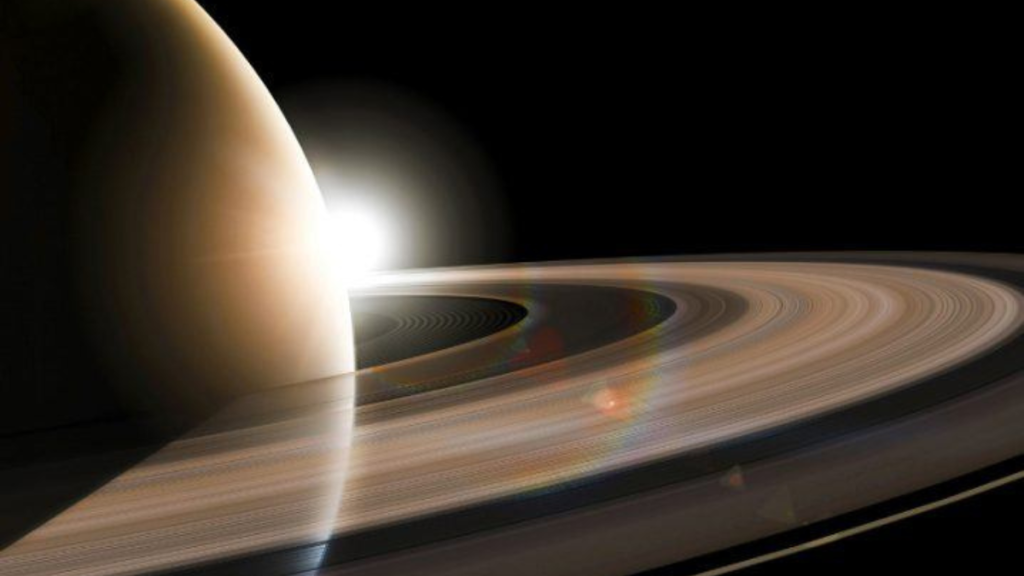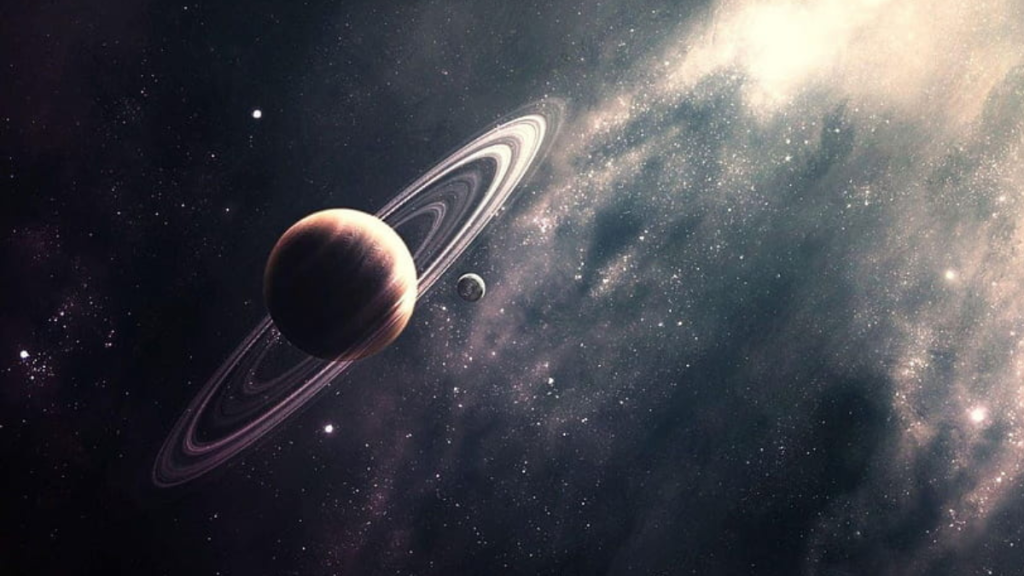Saturn, the jewel of the solar system, has long been celebrated for its enchanting rings, a cosmic wonder that has fascinated astronomers and skywatchers alike. These rings, like a celestial adornment, have been an integral part of Saturn’s allure. However, an astronomical event is on the horizon that will alter the night sky as we know it. In a mere 18 months, Saturn’s magnificent rings, which have graced the cosmos for generations, will vanish from our view. This blog post explores the reasons behind this impending disappearance and the profound impact it will have on our understanding of the universe.

Saturn’s Iconic Rings:
Saturn’s rings are a celestial phenomenon, composed of seven distinct rings—A, B, C, D, E, F, and G. These rings are made up of an array of small particles, primarily ice, with a smaller fraction of rocky debris and cosmic dust. Their breathtaking structure is not solid but consists of countless particles in orbit around the planet. While the rings are remarkably wide, reaching up to 282,000 kilometers in diameter, they are incredibly thin, with an average thickness of about 10 meters.
The Mystery of Their Origin:
The origin of Saturn’s rings has long been a subject of intrigue among astronomers. Several theories have been proposed to explain their existence. One theory suggests that the rings are remnants of a moon or comet that was torn apart by Saturn’s immense gravitational forces. Another hypothesis posits that the rings are leftover material from the nebular substance from which Saturn formed. While the exact age of the rings remains a topic of debate, recent research suggests that they may be relatively young, possibly forming just 400 million years ago, making them younger than a tenth of Saturn’s own age.
The Rings’ Steady Disintegration:
One of the intriguing aspects of Saturn’s rings is their steady disintegration. Over time, the rings are gradually breaking apart, with icy particles showering into Saturn’s atmosphere. This ongoing process, while imperceptible in the short term, has profound long-term implications. As these rings disintegrate, they lose their distinctive characteristics, and the entire appearance of Saturn changes.
The Vanishing Act – 2025:
The most dramatic moment in the life of Saturn’s rings is fast approaching. In 2025, Saturn will align edge-on with Earth, a celestial alignment that renders the rings virtually invisible. It will be as challenging to spot Saturn’s rings as it is to see a sheet of paper positioned edge-on at the far end of a soccer field. This alignment will be a bittersweet moment for astronomers and skywatchers who have marveled at Saturn’s beauty for generations.

The Upside of Celestial Tilt – 2032:
However, this vanishing act is not the end of the story. Saturn’s celestial dance continues, and by 2032, it will gradually tilt, once again revealing the splendor of its rings. This celestial tilt will offer a renewed opportunity to witness the magnificence of Saturn’s rings. But there’s more to this celestial spectacle.
Enhanced Moon Visibility:
As Saturn tilts and showcases the other side of its rings, a silver lining emerges. The enhanced visibility of Saturn’s moons will be a celestial treat. Among these moons, Titan, Saturn’s largest moon and the second-largest in the solar system, will take the center stage. Titan, larger than the planet Mercury, boasts a substantial atmosphere, primarily composed of nitrogen with traces of methane. Observing Saturn’s moons during this period will be a unique experience for stargazers.
Read More Related Articles : Why the meteor shower tonight presents an exceptional occasion to observe a brilliant fireball
The Clock Is Ticking:
The countdown to Saturn’s ring disappearance has begun. With only 18 months left until this cosmic event, now is the time to seize the moment. Saturn currently graces the night sky, offering a splendid view for those with telescopes and binoculars. Witnessing the grandeur of Saturn’s rings before they vanish from sight is a unique opportunity. The beauty of the rings, the intricate patterns within them, and the interplay of light and shadow on Saturn’s surface—all of this can be observed and appreciated while the opportunity lasts.

A Celestial Gift:
Saturn, with its rings, has been a celestial gift to humanity. Its beauty and mysteries have sparked curiosity and awe for centuries. The impending disappearance of the rings, while temporary, reminds us of the dynamic nature of our cosmos. It is a humbling and awe-inspiring experience to witness celestial events that transcend human lifetimes.
Saturn – A Cosmic Wonder:
Saturn, the sixth planet from the Sun and the second-largest in the solar system, is not only known for its rings but also for its diverse moon system, its magnetic field, and its role in space exploration. The Cassini-Huygens mission provided invaluable insights into Saturn, its rings, and its moons, enhancing our understanding of this captivating planet.
Conclusion:
The countdown to the disappearance of Saturn’s magnificent rings has begun. In only 18 months, this celestial marvel will be hidden from our view, and we will have to wait until 2032 for their grand return. The impermanence of this event serves as a reminder of the ever-changing nature of the universe. Now is the time to turn our telescopes toward the night sky and witness the splendor of Saturn’s rings before they momentarily slip away, leaving us in awe of the cosmos once more.
